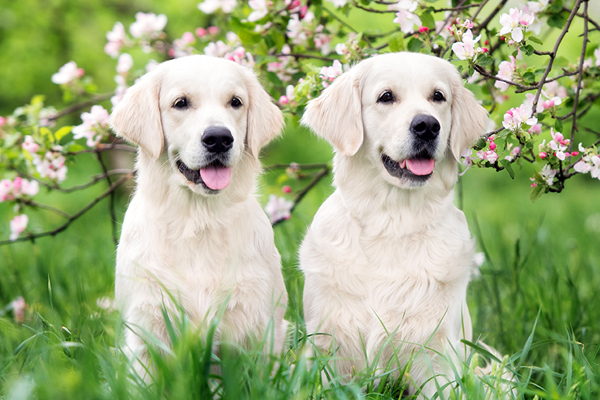
Spring has almost sprung! It is officially only a few weeks away, and in some parts of the country tree buds are beginning to show blossoms or leafing out, and the grass is starting to green up. Punxsutawney Phil predicted an early spring, so it’s not too crazy to start thinking about spring cleaning, even though some in our northern climates are still waiting for their ice and snow to finish falling or fully melt.
Spring cleaning, the annual ritual of “renewal” by tidying up the home and yard, can also include us pet parents considering how we can refresh things for our furry friends as we go about our spring house cleaning chores. With such keen senses of smell, pets love a fresh smelling environment, and a good cleanup makes them healthier and happier.
Below you will find a handy list of 25 spring cleaning and organizational tips to help our four-legged companions feel better about themselves, help our homes look and smell fresh again, and allow us to be more organized as we head toward an active part of the year. What a great way to begin the spring season while treating our pets at the same time.
Toys & Accessories
A new lease on life can be afforded to pet toys and accessories if they are de-furred and cleaned every month or so. And spring is a perfect time to put any stuffed toys in the washer (sanitizing mode) and dryer, and clean hard toys with a half and half solution of vinegar and water, mild dishwashing detergent and water, or a mild mix of bleach (1/2 teaspoon of bleach to 1 gallon of water) and water with a really good rinse afterward. Try to avoid bleach if you can since it has a strong odor and can irritate pets.
Toy boxes can be cleaned out and disinfected as well. Richell makes a very nice Wooden Pet Toy Box that effectively organizes toys, yet also makes a decorative statement in the house. Make sure if you are washing and disinfecting hard, sharp bones and toys that you scrub into the crevasses real good to get rid of any bacteria that may be hiding out. According to the National Sanitation Foundation (NSF), pet toys are an unwelcome source of coliform bacteria (including staph bacteria), yeast and mold. In addition, pet toys are the 7th germiest culprits in the entire house, not far behind kitchen sinks and sponges.
Food & Water Bowls
According to the NSF, pet food and water bowls are the fourth germiest area in your home. Pet dishes should be washed daily or at least weekly by hand with mild detergent and water. Once a week you can fill them with a bleach – water mixture of a ½ teaspoon/gallon of water and let them soak for 10 minutes before rinsing thoroughly. Not only will your pet bowls look shiny and new each time you clean them, but washing them out can help your pet avoid getting sick and keep your family healthy as well.
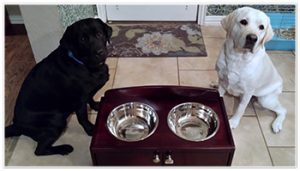
Richell offers a stylish and ergonomically elevated Wooden Elegant Pet Feeder that provides pets a convenient and pet-friendly feeding station. It features two high quality, large stainless steel bowls that are easy to clean and sit above a roomy storage cabinet which helps organize toys, treats, leashes and much more.
Pet Hair
Pet hair can get everywhere - stubbornly everywhere! Especially if your pet breed is a certified shedder. And spring, into early summer, can be the worst time. Labrador retriever owners know all too well that their vacuums will get a workout nearly every day during the “shedding season”. Vacuuming regularly is important to keep hair and dander cleaned up and to avoid unnecessary allergic reactions. Rubber gloves can be used to remove more hair from furniture, chairs, etc. where the vacuum can’t reach. Slightly dampen the rubber gloves and glide them along areas where hair collects on furniture and drapes. There are also special brushes available that can remove hair from clothes and furniture.
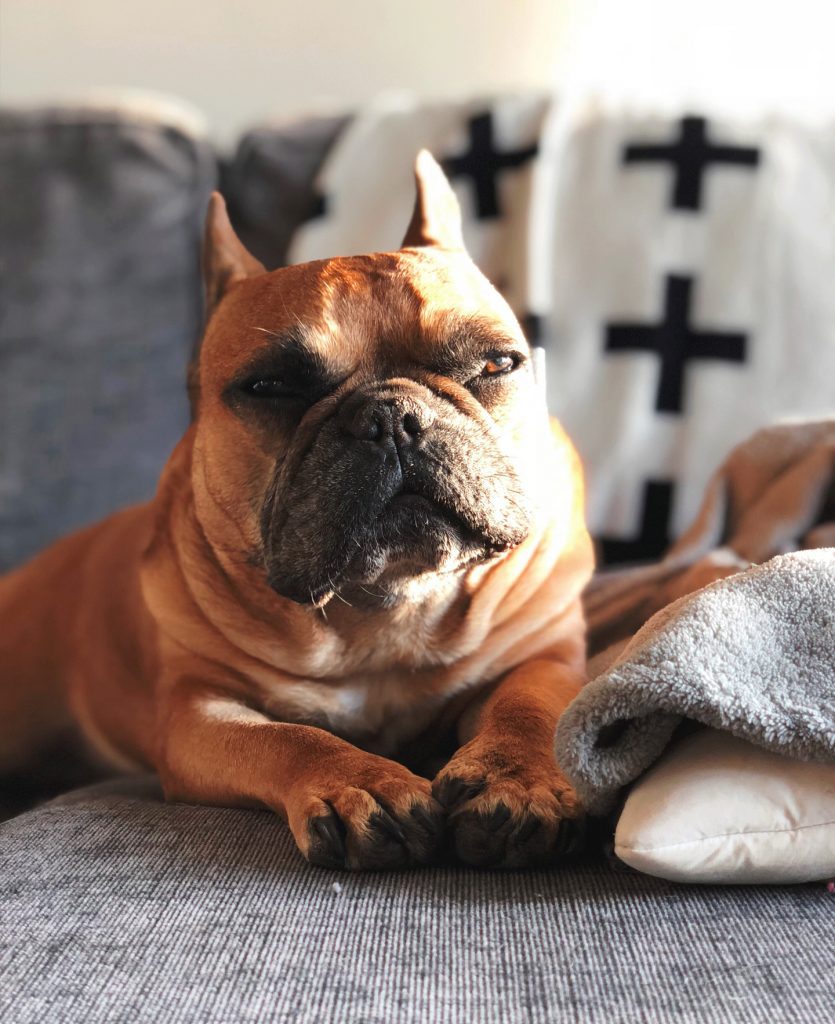
Pet Stains
Stains happen. And cleaning them up is all part of being a pet parent. If you have tile or hardwood flooring you are fortunate in this regard. If you have carpet, or if the stain occurs on fabric covered furniture, there is some extra cleanup involved. There are multitudes of pet stain removers on the market, however, there are some simple and more natural ways to remove carpet or furniture stains that create fewer odors, are more pet-friendly, and typically work just as well.
The key to effective stain removal is to gather up as much of the stain-causing material as possible, then blot the stain with white paper towels, cloths or rags instead of colored varieties so you don’t add more color to the stain. Be sure to blot the area instead of scrubbing it at this point. Keep blotting the area until no, to very little, color shows up on your towel or rag and the vast majority of moisture has been absorbed. Scrubbing can commence once most of the moisture and a decent amount of stain has been removed.
● Urine Stains
Attempt to remove urine stains as quickly as possible. According to the DIY Network, if urine dries on the carpet, the odor will set into the carpet fibers. Get as much of the urine up as possible by blotting and pressing hard on the stain. You can even stand on it to absorb more moisture. Mix a 50/50 solution of vinegar to water and dab it on a clean white towel or rag and start blotting again. Then you can begin scrubbing a little. You can then spray the solution directly on the stain and continue to scrub. In addition, you can sprinkle some baking soda on the stain if you still need to lift more of it. After some effort, the stain should be removed.
● Vomit Stains
According to the DIY Network, there are a few unique ways of getting vomit stains out of carpet or upholstery. Since vomit originates from the stomach, it is very acidic. Therefore, it is critical to clean it up as soon as possible. Again, clean up as much as you can, then begin blotting the stain with white paper towels, fabric towels or rags. Then Mix a solution of 2 cups of warm water, 1 tablespoon of salt, 1 tablespoon of liquid dish soap and 1/2 cup of vinegar. Dip a soft cloth or sponge into the mixture and begin blotting gently. Do this until the stain is removed. Then lightly rinse the solution away from the carpet or fabric until dry.
Courtesy of the DIY Network, another method of removing vomit stains is to mix a solution of 1/2 cup of hydrogen peroxide and 1 teaspoon of liquid dish detergent in a bowl. Then sprinkle baking soda on the soiled area. Pour the liquid solution onto the baking soda and the stain. Gently rub the area with a cloth or soft-bristled brush. Let it sit for 10 minutes (longer if the vomit has dried). Use a towel to remove as much liquid as possible, and then vacuum the area. For a tough stain, you may have to repeat these steps.
Pet Bedding & Blankets
Pet bedding and blankets can get really soiled, especially when weather conditions are sloppy. Spring is a great time to begin the recommended weekly routine of vacuuming and shaking off the hair and dirt, then giving bedding and blankets a good wash and dry with non-scented or pet-friendly laundry detergent and dryer softener. Some bedding is cumbersome, so be sure to put these loads on a bulky setting. When bedding or blankets will no longer come clean or get too frazzled, consider replacing with new bedding materials. Your pet will relish sleeping in a newly cleaned or brand new bed.
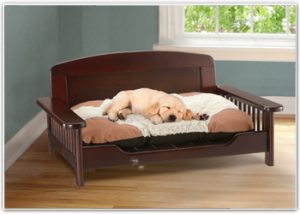
If you are in the market for a new pet bed, Richell offers an Elegant Wooden Pet Bed that features an elevated design and provides good ventilation so your pet can enjoy a comfortable sleep. Give your pet a bed designed with elegance, and made entirely of durable wood construction with a beautiful dark brown finish.
Collars, Leashes & Tags
Pets get dirty and so do their collars and leashes. And sometimes these pet accessories get frayed, worn out or outgrown, and need replacing to keep your pet safe. Spring is a great time to check their condition and clean them up using a good scrub from a toothbrush or scrub brush and utilizing your pet’s shampoo to get off the grime. Be sure to rinse them well with warm water. It’s also a perfect time to check if your pets’ tags can still be read and that their rabies tag and microchip are in good shape.
Litter Box & Cages
Just as with pet bedding, litter boxes, pet cages, and kennels can get quite dirty as well. You can employ the same cleaning and sanitizing strategies described above by removing all materials, then washing/scrubbing the litter box, cage etc. with warm, soapy water and rinsing. You can then sanitize with the same 50/50 mix of vinegar and water before drying completely.
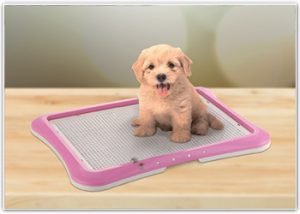
To help cut down on some of the mess in crates, kennels and on floors during potty training, Richell’s PAW TRAX Mesh Tray can provide relief by offering protection to keep surfaces clean when it used along with PAW TRAX Doggy pads.
From cat litter boxes to dog crates, kennels, rabbit cages, hamster, gerbil, guinea pig or ferret cages, spring is a great time to tidy up and begin a regular schedule of cleaning litter boxes and cages once a week for the remainder of the year.
Food & Treats
It’s a great time of year to look through your pet pantry and see if any food or treats have expired. While pet food has long use-by dates and is likely good a little while after that date, food, treats or supplements which are way beyond that date are good candidates for being thrown out. It’s also a good time to re-bag or toss out any food or treats that won’t be used for a while or at all.
Teeth Brushing
Brushing your pet’s teeth is a good habit to get into. Not only will it help with their overall health, but it will freshen up their breath as well. Hard bones and chew toys are great for keeping tartar and some plaque at bay, in addition to exercising your pet’s teeth and gums, but teeth need to be brushed as well. You certainly don’t want to treat your pet for periodontal disease. That can get costly. Brushing a pet’s teeth is pretty easy, inexpensive and gets easier as the pet gets more used to the routine. A toothbrush and pet toothpaste are all that is needed to keep your pet in tip-top oral shape.
Pet Clothes
Spring is the perfect time to wash winter pet outfits, coats, booties, hats, and other winter pet gear. That way they will be fresh again and ready for next winter. Most pet wearables are machine or hand washable with mild detergent and possibly a delicate setting for the dryer. It’s best to store them in a waterproof container and out of humid or really hot areas such as basements and attics. Don’t put any mothballs in the container as that will leave a strong residual smell that could irritate your pet when they wear them again.
Veterinarian Visit
What a great time for a checkup. Pets are coming out of the winter doldrums and into the more active spring season. It’s a great time of year for a checkup and to make sure your pet is up to date on their shots, heartworm medicine, and any flea and tick preventative you wish to give them as it starts to get warmer.
Bathing & Grooming
Many dogs love to get a bath. Some cats do too…but not near as many. Bathing your pooch in spring allows for a possible bath outside since the temperatures will begin getting warmer. This could be welcome if you’ve been relegated to the bathtub the past few months. A good rule of thumb is to bathe Fido once a month unless his coat is overly greasy…then you can bathe more often, but definitely, use a pet or baby shampoo. Bathing too often can dry out your dog’s skin and lead to other issues. Cats typically don’t have to be bathed since they are able to adequately clean themselves with their tongue and teeth, but if they have a mess in their litter box, sometimes a bath is warranted. Typically just a brushing is needed to keep cats clean.
Spring is also a great time to catch up on grooming, especially if your pooch hasn’t been groomed over the winter. Pay special attention to the fur between your pet’s paws, which if long can make it slippery if they try to stop suddenly. A groomer can take care of that, but it’s easy to do yourself if you have an Oster or similar hair trimmer.
Nail Trimming
Over the winter nails have likely grown out, become dirty or frayed in the mud, snow, and ice, and are likely good candidates for a trim. However, many pets don’t enjoy having their nails cut. Trimming nails can be a tricky proposition depending on the temperament of the pet. It can qualify as a do-it-yourself item on your checklist, but many times a professional nail trimmer or vet office will be more efficient and save you a lot of trouble if your pet is sensitive about having their nails trimmed. You can often find nail trimming experts that come to you so your pet isn’t in strange surroundings as they get their nails trimmed. Just remember, if you trim your pet’s nails and cut into the “quick” and it starts to bleed, apply direct pressure for a few minutes with a paper towel or clean rag until the bleeding stops. If it doesn’t stop after a few minutes you can employ styptic powder or cornstarch to help the blood coagulate more easily.

Beds, Couches & Chairs
Pets are part of the family. As such, we pet parents often allow them to share our couch, chairs, and bed. But, inevitably fur is left behind. Pet owners who have leather furniture have an advantage since fur doesn’t stick to leather. If you have fabric couches and chairs there is some work to be done to de-fur them. A vacuum with a hand attachment is a good place to begin. You may also need to try a tape roll designed to remove hair, or you can try using a damp rubber glove to gather up fur and dispose of it. Luckily bed sheets can simply be removed and washed. With comforters, you can try the same methods used for fabric covered furniture.
Dusting
You may remember the days when you didn’t have a pet, and there wasn’t as much dusting to be done. Pets can add a lot of dander and fur to the equation – especially breeds or individual pets that shed a lot or traditionally have drier skin. Pets play, romp, and shake – just like a dust devil. A great way to do some spring dusting is to use a microfiber cloth. It picks up everything. And you can easily shake it out. Vacuums are great as well, especially when paired with some good attachments. Dusting around and under cages or kennels with a specialized vacuum attachment is super easy and convenient. Dusting wood furniture with a microfiber cloth is very effective as well. Just be sure when you dust your TV screen that you use a soft cloth so you don’t put scratches on the screen. And remember to dust the pet toy bin as well since it will attract its share of dust.
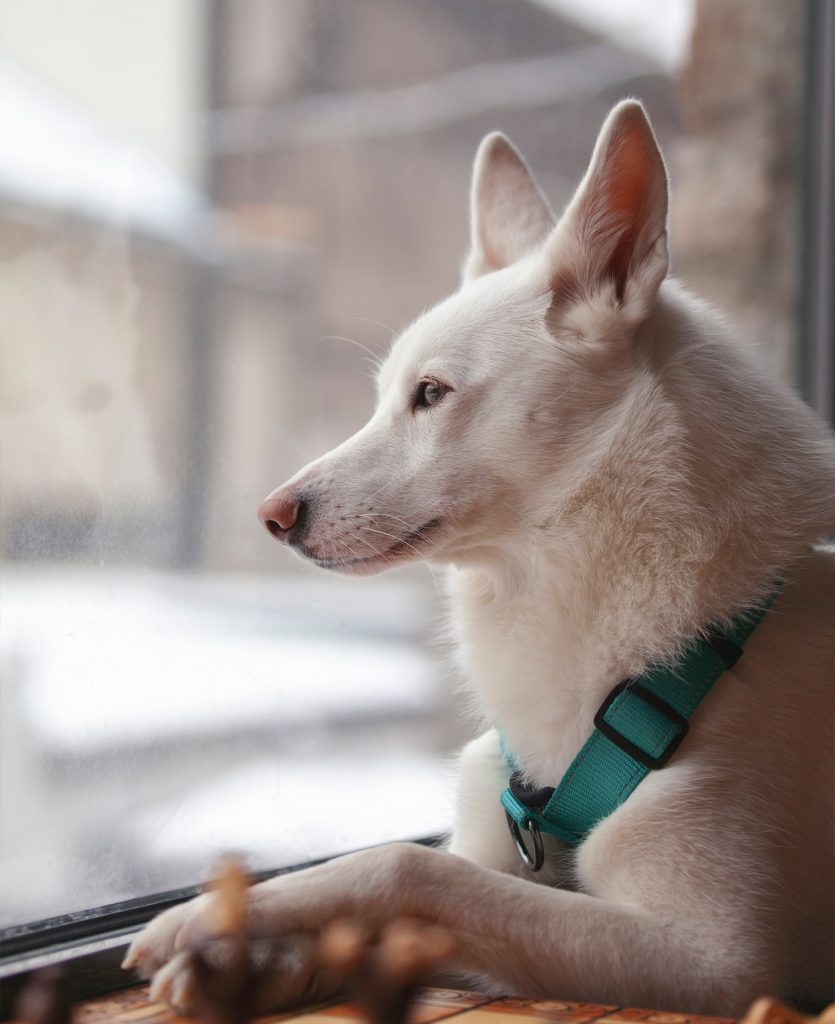
Window Screens
Pets love looking out windows. It’s their view to the outside world if they don’t get out much. Be sure to check your window screens in the spring to make sure they are secure and not ripped or compromised. The last thing you want when you open your windows for some refreshing spring air is for your pet to escape. While you are at it you can clean the screens with a car tire brush and some mild detergent to remove any dirt or pollen.
Air Filter
Spring is a great time to check and change your home air filter(s). Your filter likely ran all winter long and will be dirty with dust, dander and pet hair. It’s a good idea to change your filter every two or three months if you have a pet. That way your heating and air conditioning system will run at peak efficiency. When you purchase a new filter it’s a good idea to purchase a few so you always have one in reserve in case a filter gets extra dirty quicker than anticipated. You can simply put the spare filter in without a lengthy trip to the home improvement store.
Muddy Paws
Many signs have been posted on doors imploring anyone who would let a pet inside - to first wipe off the pet’s paws. Countless stories abound illustrating how pets have made a beeline in the door with muddy paws and end up doing a number on floors, carpets, furniture, and beds. Spring can be a wet and messy season full of days when muddy paws are the norm. Old towels and rags make great paw cleaners. Dampen one area in case mud is caked on. Fabric towels have great texture and absorbency, so they can be a preferable alternative to paper towels and smooth rags like old shirts. A “mud rinse” also works well. For this, you simply need an old shallow bucket or tub with mild water and you can easily rinse the mud from a pet’s paws. Then dry with a towel.
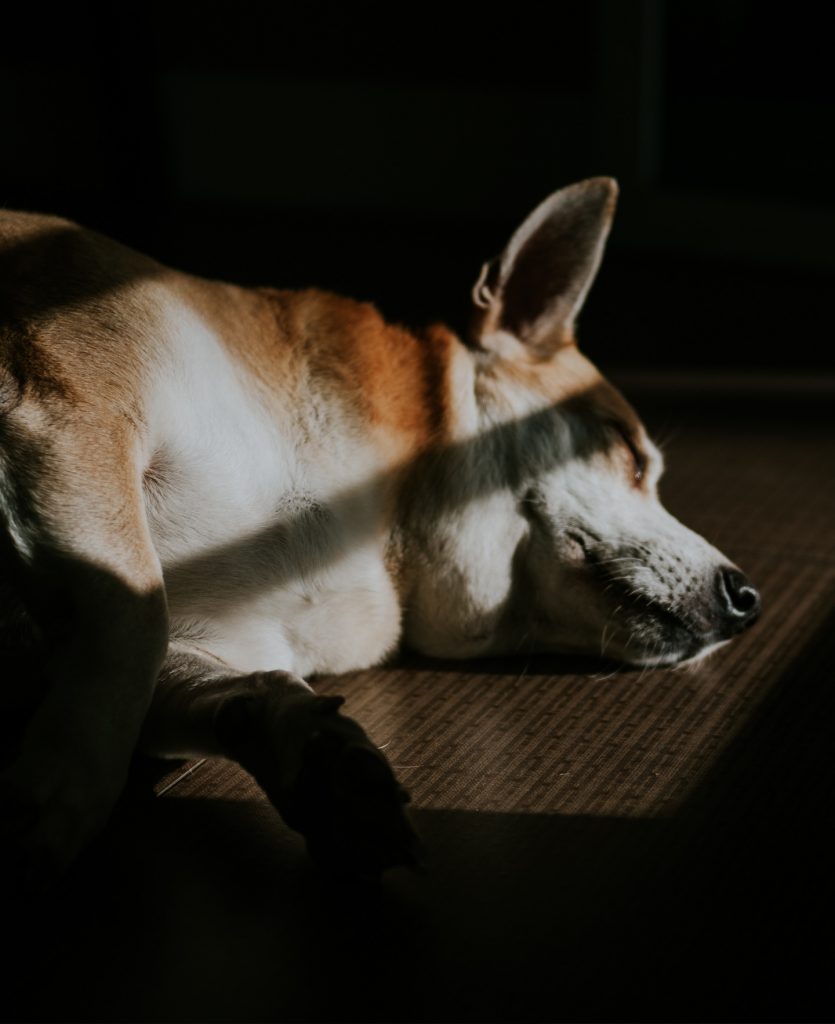
Floors
A good mop and bucket work great for cleaning up floors frequented by pets, especially if a large area is to be cleaned. A Swifter type cleaning device can work well in areas that aren’t too large, but it’s hard to beat a mop and bucket of warm water. It is best to vacuum the floor before you clean so you can remove any hair prior to mopping. This will help to clean the floor quicker since you won’t be dealing with dirt and hair on the mop. Be careful that pets are put away or kept out of the area while it is drying to keep them from slipping and to avoid getting the floor even dirtier.
Carpets
Carpet cleaning is a spring cleaning staple, especially for pet parents. However, it may be best to wait until late spring or early summer when more of the messy weather has retreated and there are fewer muddy paws. Carpet cleaning machines can be rented or purchased and do a pretty good job of cleaning carpets. Small carpet area foams and cleaners are available as well for smaller areas. Just be sure that the chemicals listed are not too strong, and even better pet-friendly.
Pesticides & Chemicals
Along with the rest of your spring cleaning, rounding up all pesticides and chemicals and placing them where pets can’t gain access, is a very worthwhile project. Pets can be drawn to the aromatic smells chemicals and pesticides give off, and they can be very hazardous for your pet. Antifreeze is one chemical to definitely keep far away from pets. It tastes sweet to them and can easily harm or kill them if ingested. De-icers and fertilizers are other chemicals to keep away from four-legged friends. Any rodent bait or pest sprays can also be hazardous to a pet’s health. Keep everything stored high enough they can’t reach it.
Yard Work
Over the winter less yard work is usually performed and pets are typically not as active in the yard as they are during other times of the year. Spring presents a great opportunity for pets to get out into the yard, explore and have fun. However, it also affords them the ability to get into things pet parents aren’t aware are out there. From other animals to poisonous plants or materials that could have found their way into the back yard, spring is a great time to prepare the yard for pets and warmer weather.
Medications
As a pet owner, gone are the days of not worrying if a pill fell on the ground and you couldn’t find it. Since most human medications are hazardous to a pet’s health, all medications need to be picked up if dropped, and lids to medications should be on tightly and stored out of a pet’s reach. The spring season is a great time to take an inventory of medicines, both human and pet, and make sure they are secure and preferably stored well away from where pets reside.
Pet Files
A great time to organize pet files is before life gets more active again during the spring and summer. That way any missing information can be updated or requested from vets, kennels, allergists or whoever your pet visits during the year. It’s a good idea to make sure your pet is current on their rabies shot and any core vaccines needed for the year.
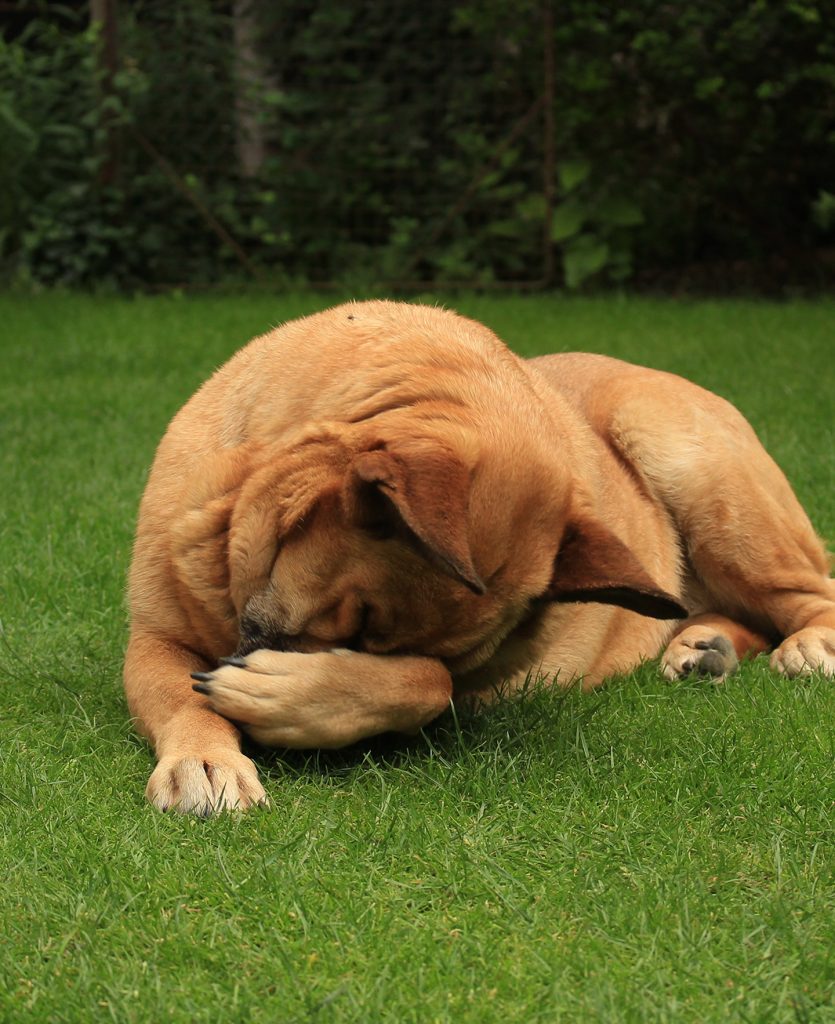
Flea & Tick Prevention
Flea and tick protection is critical for pets to remain healthy and free from any diseases. There are many products available and most are excellent. The main takeaway is to get each pet on some type of flea and tick protection, whether it is a topical, collar or oral medication. Oral medication such as Sentinel can also provide protection against heartworms in addition to the development of fleas.
From everyone here at Richell, we hope you have found these 25 Spring Cleaning and Organizational Tips helpful for the upcoming spring season. We are a premier pet products company that strives to produce and distribute the most innovative, industry leading, comfortable and elegant pet products in the world. Thank you for stopping by and visiting with us.
 A Double Dip New Year’s Resolution
01.07.2019
A Double Dip New Year’s Resolution
01.07.2019
Exercising with your pet so everyone is more fit! In January, Mother Nature has much of the Northern Hemisphere locked in an icebox or, at the very least, has the “thermostat” turned way down. >>> READ MORE
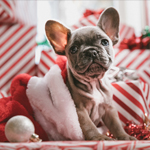 Holiday Pet Safety Tips
12.03.2018
Holiday Pet Safety Tips
12.03.2018
December is packed with many holidays. And all have their unique traditions and possible pitfalls for pets. From Christmas and Hanukkah to Boxing Day, Kwanzaa, and Omisoka, pets will be introduced to many types of celebrations and festivities. >>> READ MORE
Please complete this form and click "Submit". Our Customer Support team will gladly address your request and respond in a timely manner.
Richell USA, Inc.
Copyright © Richell, Inc.. All rights reserved